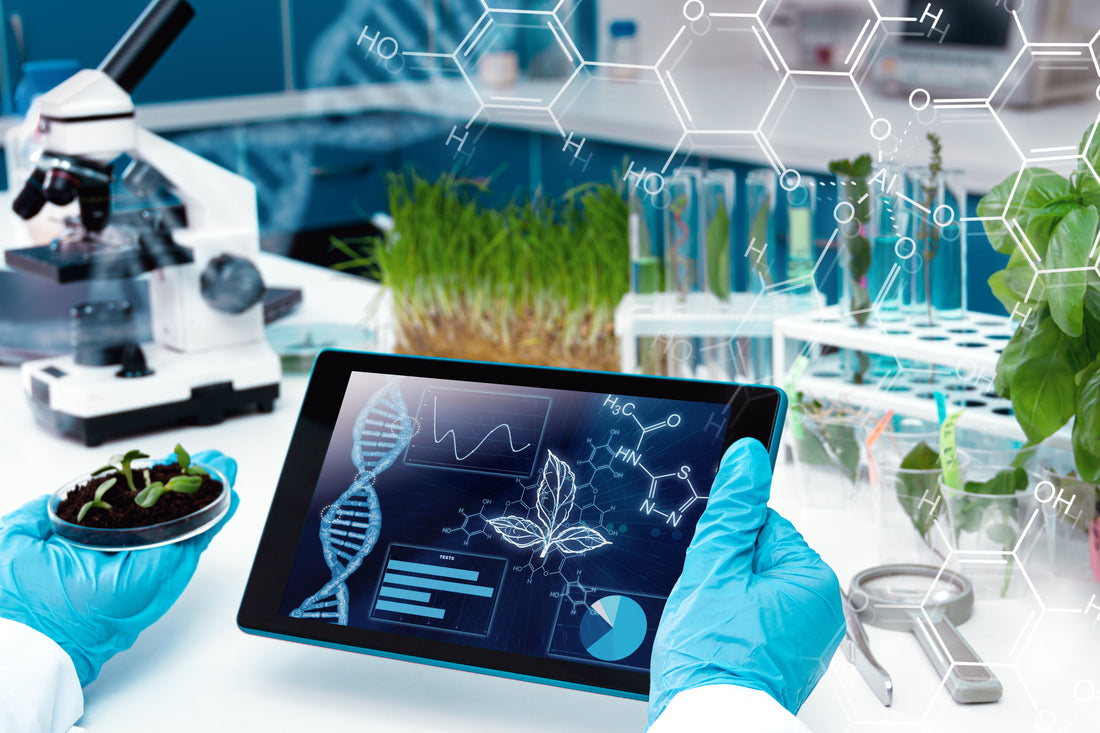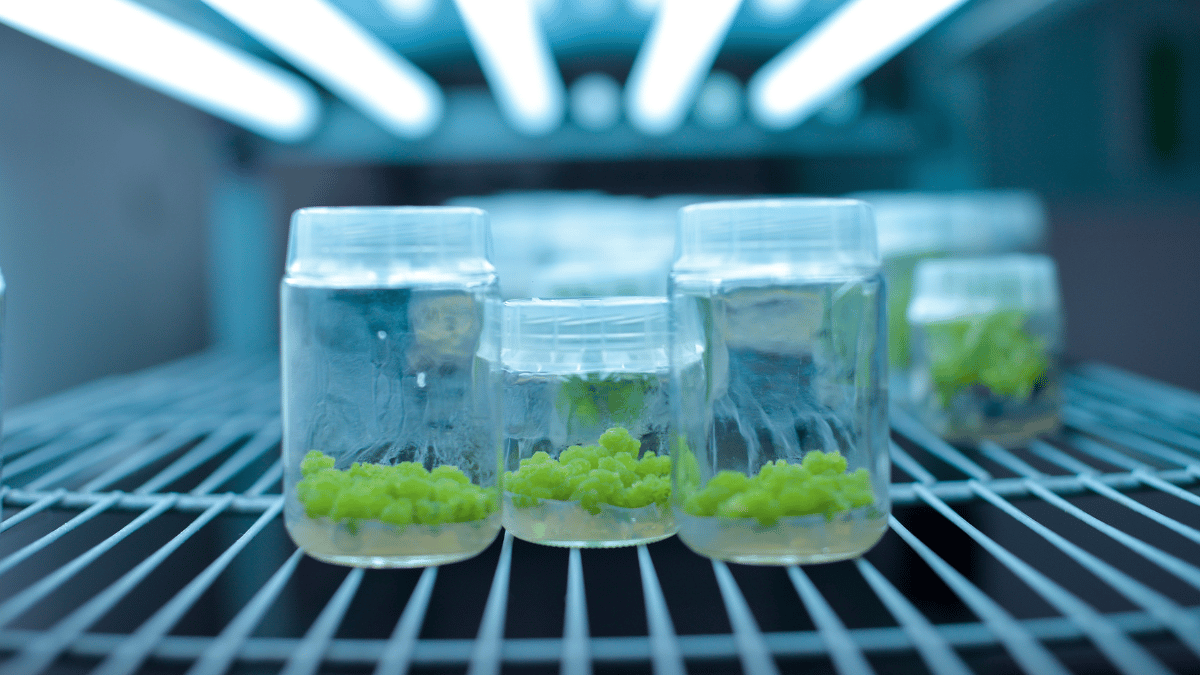
Techniques To Identify Plant Pathogens (part-1)
As a content and community manager, I leverage my expertise in plant biotechnology, passion for tissue culture, and writing skills to create compelling articles, simplifying intricate scientific concepts, and address your inquiries. As a dedicated science communicator, I strive to spark curiosity and foster a love for science in my audience.


Plant pathogens are one of the major threats to agriculture sustainability. They cause a reduction in the productivity of the crops. There is a global crisis of crop loss from pathogen infections, including bacteria, fungus, and viruses.
Introduction
Plant pathogens are one of the major threats to agriculture sustainability. They cause a reduction in the productivity of the crops. There is a global crisis of crop loss from pathogen infections, including bacteria, fungus, and viruses.
The factors that might be involved in the pathogen emergence transfer, and spread include:
- The majority of agricultural and forestry damages are the result of invasive alien pathogens accidentally introduced into new areas as a result of global trade and transport.
- Due to human intervention, the distribution ranges of pathogens have been expanded, which facilitates hybridization and horizontal gene transfer and leads to the emergence of new pathogens.
- Climate change is another factor that influences plant-pathogen interactions. Plant diseases can spread in agriculture as a result of elevated temperatures, climate extremes, and differences in the amount and pattern of annual precipitation.
Early detection of these plant pathogens is one of the most effective solutions to enhance plants’ productivity and prevent/limit the spread of the infection.
In this article, we’ll learn about controlling pathogen spread and the techniques used in labs for the early detection of disease-causing pathogens.
Controlling Plant-Pathogen Spread
The traditional technique for pathogen detection, including bacteria and fungi, is based on observing symptoms or culture-based methods. It means the pathogen must be grown on specific media under controlled conditions, a process that usually takes days or even weeks. Additionally, the morphological identification of pathogens by microscopic examination requires special training.
It’s essential to develop efficient, fast, and inexpensive approaches for the early detection of pathogens, to control and prevent the spread of diseases into new areas.
Plant-Pathogen Identification Techniques
Some advanced and widely used techniques used to diagnose plants for pathogen infection include enzyme-linked immunosorbent assay (ELISA), immunofluorescent staining, lateral flow immunoassays (LFIA), and immunoblot.
However, there are some challenges associated with these techniques. To begin, these processes are expensive—the production of monoclonal antibodies used in these methods is costly—and additionally, low specificity has also been reported.
A growing number of laboratories are now using DNA-based methods to detect and identify pathogens, including polymerase chain reaction (PCR) and its other variants, like nested PCR, quantitative PCR (qPCR), digital PCR (ddPCR), and multiplex PCR.
The advantage of these methods is that they are faster, very specific, and cost-effective. However, they also possess certain limitations, such as in most cases trained personnel and specific equipment is required.
Now, in recent years isothermal amplification of DNA-based technologies has emerged that can overcome the limitations of PCR-based techniques. It includes recombinase polymerase amplification (RPA), helicase-dependent amplification (HDA), and loop-mediated isothermal amplification (LAMP).
All these identification techniques have been categorized into two groups: Direct and Indirect detection methods. Below is a brief review of some of these commonly used techniques in labs.
Direct Detection Methods
The direct detection of diseases involves molecular and serological methods that could be used for high-throughput analysis when a large number of samples need to be examined. The pathogens responsible for diseases, such as bacteria, fungi, and viruses, are detected directly in these methods, which allows accurate identification of the diseases/pathogens.
Polymerase Chain Reaction (PCR)
It’s a technique used to amplify the DNA of the organisms in millions or billions of copies for their study. J.F. Kohler and C. Milstein, and K. Mullis were awarded Nobel prizes in 1984 and 1993 for amplification of nucleic acid sequences and development of monoclonal antibodies using PCR.
Due to the high sensitivity of the technique, these techniques are suitable for the identification of pathogens.
A variant of PCR, multiplex PCR can be used to simultaneously detect different DNA or RNA by running a single reaction. Whereas, Real-Time PCR can be used for on-site diagnosis of plant diseases based on bacteria, fungal, or viral nucleic acids.
The limitation of the technique are:
- DNA extraction is crucial to the success of PCR, and its performance is affected by inhibitors in the sample assay, polymerase activity, PCR buffer, and concentration of deoxynucleoside triphosphate.
- The practical applicability of PCR is limited by the requirement of designing a primer needed to start the DNA replication.
Fluorescence in-situ Hybridization
This technique is used to detect and locate specific DNA sequences on the chromosome. A small DNA sequence containing a fluorescent molecule, called a probe, is attached to DNA and helps in identification.
The technique is efficient to detect bacteria by using microscopy and DNA hybridization of probes and target genes from plant samples. Additionally, it can also be used to identify fungi and viruses, and other endosymbiotic bacteria that infect plants.
The presence of pathogen-specific ribosomal RNA (rRNA) sequences in plants makes it easier to detect pathogens using the FISH technique.
The technique can be used to detect pathogens from both, culturable microorganisms and yet-to-be cultured (or unculturable) organisms. However, there are some limitations to the technique which include:
- False-positive results due to insufficient penetration, low rRNA content, the higher-order structure of target or probe (e.g., three-dimensional rRNA, loop and hairpin formation and rRNA-protein interactions), and photobleaching.
- Lower specificity
Enzyme-Linked Immunosorbent Assay
In this technique, pathogens are detected based on antibodies and color changes in the assay. Viral, bacterial, and fungal target epitopes (antigens) are made to bind specifically to antibodies conjugated with enzymes. The interaction between the substrate and the immobilized enzyme will lead to a change in color, which will help in detecting pathogens.
A tissue print-ELISA, as well as lateral flow devices, have been developed for on-site disease detection of plants.
The limitation of ELISA are:
- Low sensitivity of bacteria
- Only useful for confirmation of disease after visual symptoms.
- Can not be used to detect before symptoms are seen.
In the second part of this article, you will learn about two other techniques of direct detection of pathogens and indirect techniques to identify disease-causing pathogens in plants.
If you are someone into plant tissue culture, then check out Plant Cell Technology’s tissue culture resources and products designed to enhance your tissue culture experiences. Furthermore, Tissue culture offers on-site consulting services to cannabis culturists, which also involves the detection and elimination of pathogens from your cultures, especially Hop Latent Viroid (HpLVD).
Choose Plant Cell Technology to Enhance Your Cannabis Tissue Culture Experience
To help the cannabis culturists with their tissue culture processes and help them to pass through the challenging phases, PCT is providing world-class consulting services.
The consulting services are available in two forms: one-on-one phone calls and on-site visits. So, if you need an instant solution for your specific challenges you can have a one-on-one call with our scientists and get your answers instantly.
However, if you are someone building a cannabis tissue culture lab or are already an established lab that is looking to train its staff or wants solutions for pathogen eradication in its commercial-scale plants, you can choose an on-site visit consulting service. Our team will visit your lab and will guide you through the whole process.
The services included in the on-site visits are:
- Blueprint, Budget, & Equipment: build and operate a successful tissue culture lab.Media Preparation: 2 sets of proprietary media preparation SOPs (4 in vitro shoot multiplication protocols and 5 in vitro rooting protocols along with coaching on how to conduct factorial trials).
- Micropropagation: how to select, surface sterilize, and induce nodes into media for removal of surface pathogens and in vitro cloning applications.
- Meristem Dissection: how to dissect apical meristem to remove viruses including HpLvd, Cannabis Cryptic Virus, Lettuce Chlorosis Virus, and more.
- Synthetic Seed and Cryopreservation: Long term genetic storage solutions.
- Pathogen Remediation by Media Amendments: how to remove viruses, systemic fungi, bacterial infections, and endophytes.
- Gender and Pathogen Screening by PCR: Eliminate male plants, identify cannabinoid ratios, and protect your mothers from pathogens and pests
Blog Categories
View by Level
Popular Blogs

Callus Culture: Definition and Applications
Introduction Tissue culture is not just one technique! Yes, you heard right! As you know, tissue culture is an advanced...
Read More
6 Plant Tissue Culture Books to Keep Learning
Introduction Most of us are fans of books when it comes to learning a topic in detail and in a...
Read MoreSubscribe to Our Newsletter







Join the conversation
Your email address will not be published. Required fields are marked